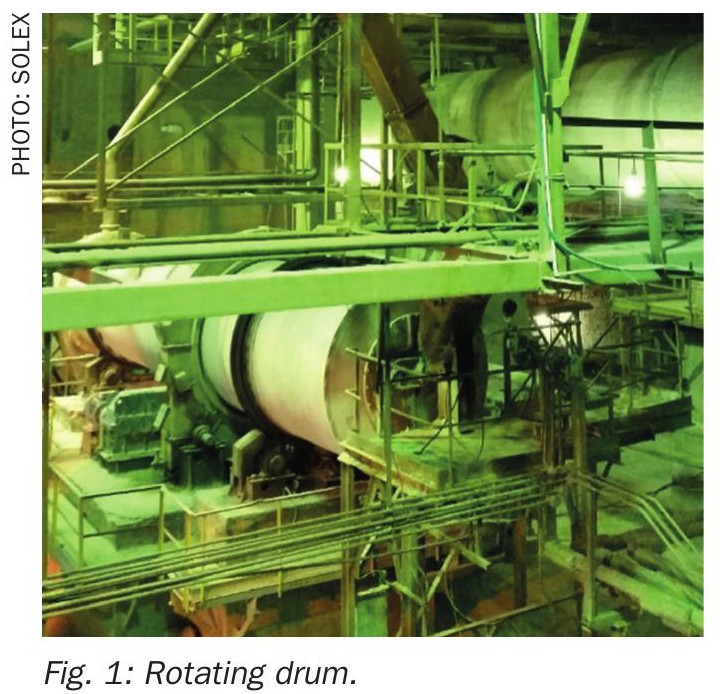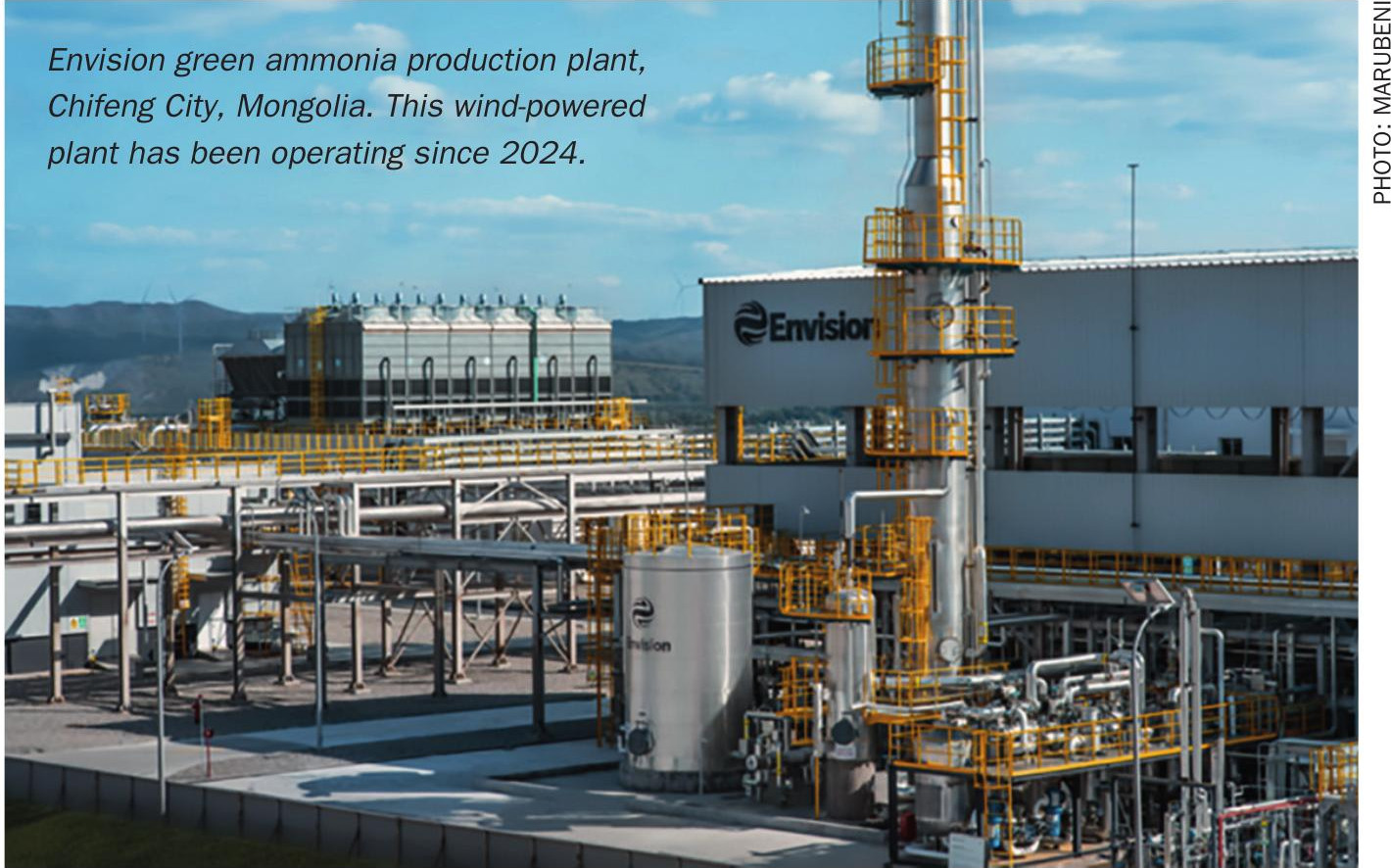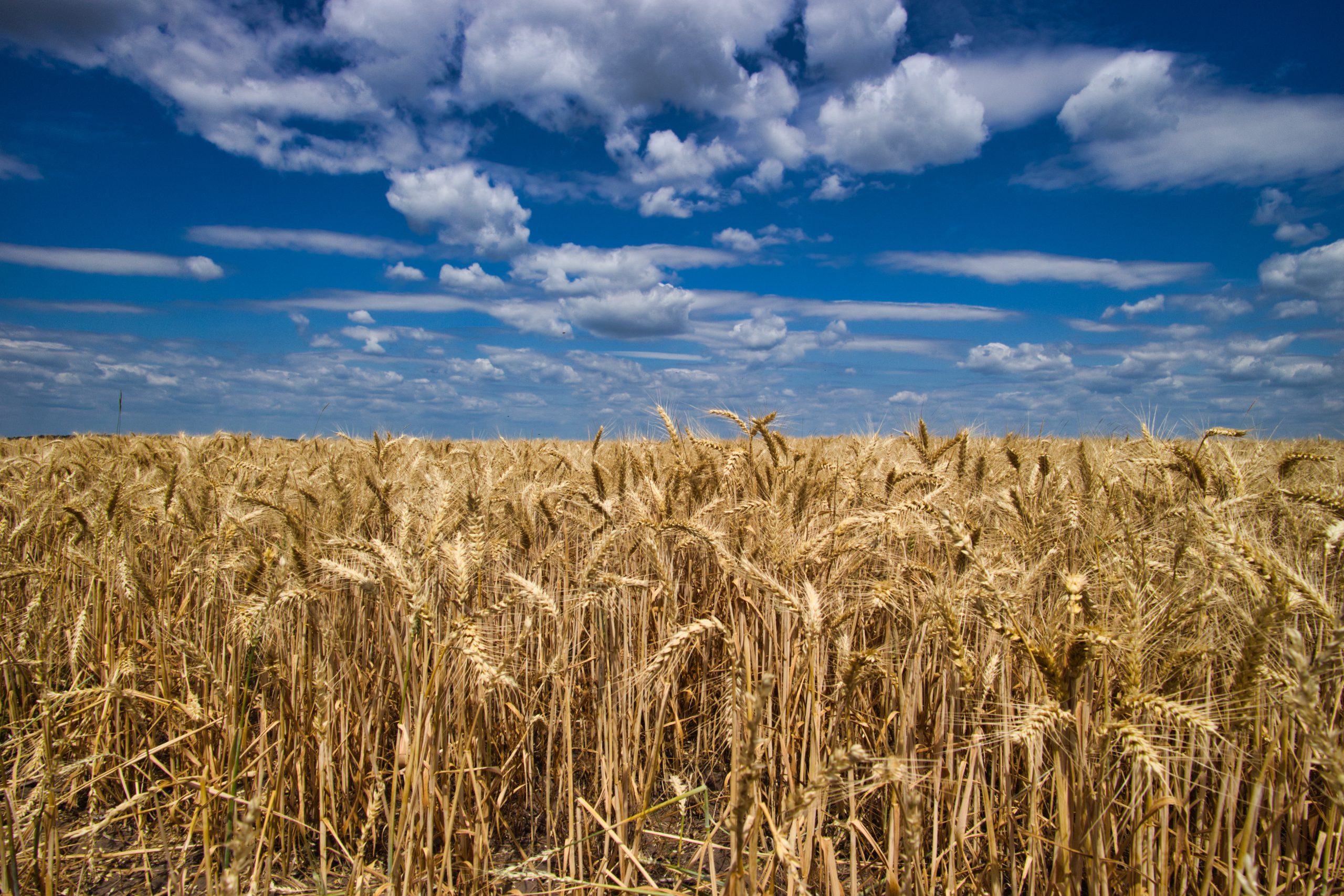Nitrogen+Syngas 376 Mar-Apr 2022

31 March 2022
The future of Europe’s nitrogen industry
EUROPE
The future of Europe’s nitrogen industry
High feedstock prices and regulatory burdens continue to put pressure on European nitrogen producers to innovate.

If any continent can be said to have invented the modern nitrogen industry, then it is Europe. It was there in 1909 that Fritz Haber invented the process for ammonia production that bears his name, and where Carl Bosch subsequently commercialised it for BASF. It was where in 1902 Wilhelm Ostwald invented the ammonia route to nitric acid manufacture that has become the basis of all commercial nitrate production. Using synthesis gas from partial combustion of coal, the ammonia industry first took off in Europe between the First and Second World Wars, and by 1960 the continent still represented two thirds of all global ammonia production. It remains the home to many of the companies that pioneered ammonia and urea production, such as Casale, Yara (formerly Norsk Hydro) and BASF.
In spite of the massive growth in nitrogen production and use that has occurred around the world in the intervening six decades, particularly in China, the European Union is still responsible for around 9% of global nitrogen production and 11% of consumption, according to 2020 figures; much larger than the continent’s share of other fertilizer nutrients such as phosphorus or potash. However, while it still represents e10 billion in annual turnover and employs 74,000 people, according to industry body Fertilizers Europe, the European nitrogen industry continues to have to contend with high feedstock prices and the regulatory ambitions of the EU at the same time that it faces stiff competition from imports from Russia, Trinidad and the Middle East. Even so, it has managed to carve out a niche for itself and continues to pioneer developments in production efficiency as well as some of the ‘green’ technologies that will shape the industry over the next 60 years.
Nitrogen demand
European nitrogen fertilizer demand was 11.2 million tonnes N in 2020. Some 60% of this was accounted for by nitrates, mainly straight ammonium nitrate, but also calcium ammonium nitrate and urea ammonium nitrate. Urea use represented another 20% of fertilizer demand, with various NPKs and speciality fertilizers making up the rest. On top of this, another 2.8 million t/a of ammonia and derivatives goes to a variety of industrial processes, including urea solutions for exhaust cleaning (‘AdBlue’), fibre production – especially nylon, polyurethanes, nitrobenzene and so on.
Around 60% of EU fertilizer demand is accounted for by wheat, coarse grains (barley, rye, oats, maize etc) and oilseed rape. European agriculture is mature, and demand for nitrogen fertilizer has remained essentially unchanged since the 1990s, at around 11 million tonnes N. However, projections for the period 2021-2031 by Fertilizers Europe show a decline in nitrogen consumption of 6% due to tightening environmental regulation.
‘Farm to Fork’
The European Commission’s view of future nitrogen consumption in the EU is set out in its ‘Farm to Fork’ and ‘Biodiversity’ strategies published in May 2020, as part of its ‘Fit for 55’ initiative to reduce greenhouse gas emissions by 55% by 2030. Of particular concern is nitrous oxide, N2 O, which is released from the breakdown of nitrogen fertilizers and manures in fields, and which is responsible for 2.4% of all global greenhouse gas emissions (6% in countries such as the US and an estimated 10% in the EU). Therefore, in relation to plant nutrients, the EC’s ambition is to reduce nutrient losses to the environment from both organic and mineral fertilizers by at least 50%, while ensuring no deterioration in soil fertility. This is expected to result in a 20% reduction in fertilizer use. It hopes to achieve this via a focus on nutrient use efficiency (NUE). The EU is already fairly efficient in terms of NUE; NUE for nitrogen – defined as the amount of nitrogen taken up by plants compared to the amount applied to the soil – rose from 50% in 1990 to 59% in 2004 according to OECD figures. The EU hopes to improve this to 80% by 2030, although this is starting to approach the theoretical maximum; the EU Nitrogen Expert Panel has established a maximum theoretical threshold of 90% NUE to account for natural nitrogen losses while avoiding the deterioration of the soil’s fertility – above 90% efficiency the soil becomes degraded. Fertilizers Europe has argued that the 90% target is too stringent, points to studies conducted by the US Department of Agriculture, the Joint Research Centre of the EU (JRC), and Kiel and Wageningen universities which have all concluded that the impact of a 40-60% reduction in greenhouse gas emissions from European agriculture stemming from the implementation of Farm to Fork targets will lead to outsourcing European agricultural production, leading to the kind of ‘carbon leakage’ that has been seen with the ammonia industry, as well as reducing EU food production by 10-20%, leading to imports and possibly food insecurity. FE argues that more reasonable NUE target would be 70%, mid-way between the 90% maximum and the figure of 50% below which there are significant losses to the environment.
Either way, there is going to be pressure on European farmers to improve nutrient uptake via techniques such as precision agriculture, nutrient management plans, balanced and timely nutrient application, and enhanced efficiency and controlled release fertilizers. As stated, the EU envisages a fall in fertilizer use by up to 20% by 2030, while Fertilizers Europe puts the figure at around 6%, but it could be reasonable if we were to assume a 10% drop in EU agricultural nitrogen consumption by the end of the decade, or around 1 million tonnes N.

Nitrogen production
Europe has 18.5 million t/a (15.2 million tonnes N) of ammonia capacity remaining, at 36 sites (see Table 1). About 40% of this is concentrated in Germany, Poland and the Netherlands. In terms of company ownership, Yara has the largest capacity, at 4.5 million t/a, spread widely across the continent. Grupa Azoty in Poland has another 2.0 million t/a, from the merger and takeover of most of the old Polish plant operating companies. Austrian-based Borealis, with facilities in France and Linz has another 1.5 million t/a, although the company has been trying to exit the nitrogen business for some years. It sold its Harfleur plant to Yara in 2014 and announced in February this year that it had reached a deal for its entire remaining nitrogen business in Europe with Euro-Chem, for a reported value of e455 million. However, EuroChem, though headquartered in Switzerland, is primarily a Russian fertilizer producer, and the impact of the current sanctions regime against Russia remains to be seen.
Downstream capacity is mainly based around ammonium nitrate and derivatives. There is 7.5 million tonnes N of AN melt capacity (22 million tonnes product), divided between ammonium nitrate fertilizer (73%), industrial grade AN (3%), and calcium ammonium nitrate (22%), the remainder going to NPK production. There is also 5.2 million tonnes N of urea capacity (11.3 million tonnes product).
European nitrogen capacity has been gradually closing over the years. The past decade has seen plants in Portugal and at Hull in the UK close, and two Romanian plants fall into bankruptcy and become idled before being bought up, refurbished and re-started. The Pancevo plant near Novi Sad in Serbia likewise has been shut down due to bankruptcy but new owner Promist says that it intends to return it to working order. On the other hand, expansions and debottlenecks at other sites have kept actual operating capacity in Europe fairly constant.
Feedstock price
The major issue for European producers has been the price of natural gas feedstock. European gas prices have traditionally been higher than those elsewhere in the world, particularly places with cheaper gas where export-oriented capacity grew up during the 1980s and 90s, such as the Middle East, Trinidad and Russia and the CIS states. More recent additions to that list have included Nigeria. European producers have the advantage of nearby markets and developed distribution chains, as well as production integrated into other sites, especially on the industrial side. However, at times of expensive gas and cheap freight rates this has not been enough to allow European plants to keep operating.

The problem with European gas prices was that Europe has become an increasing importer of natural gas, particularly from Russia, though also increasingly as LNG. In both cases contracts were often priced via oil related benchmarks, rather than via gas on gas competition. In both cases the past decade or so has seen oil indexed pricing retreat from Russian gas and LNG, and European gas prices had been falling, especially once the covid pandemic began. Several closed ammonia plants in eastern Europe were restarted during this time. But the past year has seen gas prices soar for a variety of reasons, as we detailed in the article in our previous issue (Jan/Feb 2022, pp16-18). The outbreak of war in Ukraine has merely compounded these worries, and as Figure 1 shows, the Dutch TTF benchmark gas price had at time of writing reached unprecedented levels of over e200/MWh, at times touching e345/MWh on spot markets, equivalent to $110/MMBtu! e200/MWh is approximately equivalent to $65/MMBtu; equivalent to more than $2,000 per tonne of ammonia.
While it can only be hoped that this is a temporary situation, it highlights the risk posed to European fertilizer producers by the continent’s dependence on Russian natural gas. It could be that the current oil and gas price shock behaves much like the one of 1973 in changing attitudes to fuel economy, decarbonisation etc. The International Energy Agency recently promulgated a ten-point plan for Europe to wean itself off this dependence. This includes:
- Ending new contracts with Russian gas producers.
- Maximising use of alternate sources (LNG, Norway, Algeria etc).
- Introducing minimum gas storage requirements to enhance market resilience.
- Accelerate the deployment of renewable energy projects.
- More production from low carbon sources such as nuclear and bioenergy.
- Short term measures to protect vulnerable consumers from high prices.
- Increased replacement of gas boilers with heat pumps.
- Accelerate energy efficiency measures.
- Encourage temporary thermostat adjustment by consumers.
- Flexibility measures to reduce industrial electricity and gas demand in peak hours.
Green production
One of the ways that European nitrogen producers are being encouraged to move is towards greater use of renewable energy to generate hydrogen feeds, or carbon and capture and storage for existing facilities; ‘green’ and ‘blue’ production respectively. While these have traditionally been thought of as expensive production routes, the natural gas prices of the past year make that assumption far less tenable. The additional effects of carbon pricing, as discussed elsewhere in this issue, also offer low carbon production routes a financial boost.
The past two years have seen a flurry of project announcements for green or blue ammonia production, with locations clustered in Australia, the Middle East and Europe. In Europe, Yara has announced the ambition of eventually fully converting its Porsgrunn ammonia plant to electrolysis, though in the initial phase this will be about 20,000 t/a of green production by 2023. Hy2Gen recently announced a 200,000 t/a green ammonia project for Sauda in southwest Norway. There is also a larger, 1.0 million t/a ‘Barents Blue’ project in Norway which would use carbon capture and storage, with start-up around 2026, and Norwegian based Equinor is also discussing a 300MW electrolysis to ammonia plant for the UK’s Humber estuary. A smaller green ammonia plant is proposed for the Orkney Islands. Denmark also has two low carbon ammonia projects planned, one project at Ejsberg to produce 300,000 t/a of green ammonia form 2026, and another smaller 10,000 t/a project to start up in 2023. Fertiberia is working with Swedish partners on a 500,000 t/a green ammonia plant in Norbotten. Borealis has signed a deal to partially convert its hydrogen feed at Ottmarsheim to electrolysis by 2025, producing 24,000 t/a of green ammonia. No doubt not all of these projects will proceed to fruition, but equally without doubt there will be further project announcements.
It is easy to overstate the impact of green production. Probably only 10% of ammonia production will be using electrolysis by 2030, but it offers an opportunity for European producers to take advantage of lower cost renewable energy and carbon credits.
Imports
Imported nitrogen represents about 30% of European consumption, with Russia, Belarus, Egypt and Algeria some of the major suppliers. In 2020, Europe imported 2.9 million tonnes N of ammonia (3.5 million tonnes product), 1.3 million tonnes N (45%) of that from Russia, and 2.2 million tonnes N (4.8 million tonnes product) of urea, 0.65 million tonnes N from Russia. There was also some ammonium nitrate and CAN, though relatively small volumes. The EU and UK have imposed anti-dumping duties on Russian AN which has diverted exports elsewhere. However, the current war in Ukraine seems sure to affect ammonia and urea exports; some 2.4 million tonnes of ammonia passed through the port of Odessa in 2021.
The future
European fertilizer producers continue to face pressures from EU environmental measures and high feedstock prices. This has forced them to pursue more efficient operations – Europe is the world’s most efficient region for ammonia production in terms of energy use. Automation and smart working are also assisting with boosting operating efficiency. Many manufacturers have also looked to monetise expertise in fertilizer marketing and distribution and farm advisory services. There is a focus on higher value, speciality products and tie ins with other industrial side streams such as melamine production.
While the burden of EU regulation has driven some manufacturers out of the region or out of business altogether, there are signs that the EU is adopting a more pragmatic may of working via its Carbon Border Adjustment Mechanism which may actually benefit those producers who invest in low carbon technologies. However, the best answer to continuing competitiveness will be a solution to Europe’s ongoing natural gas supply problem.






